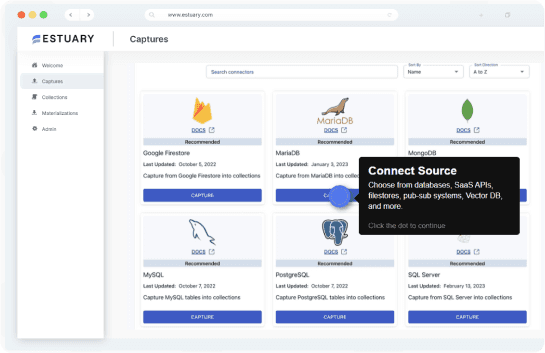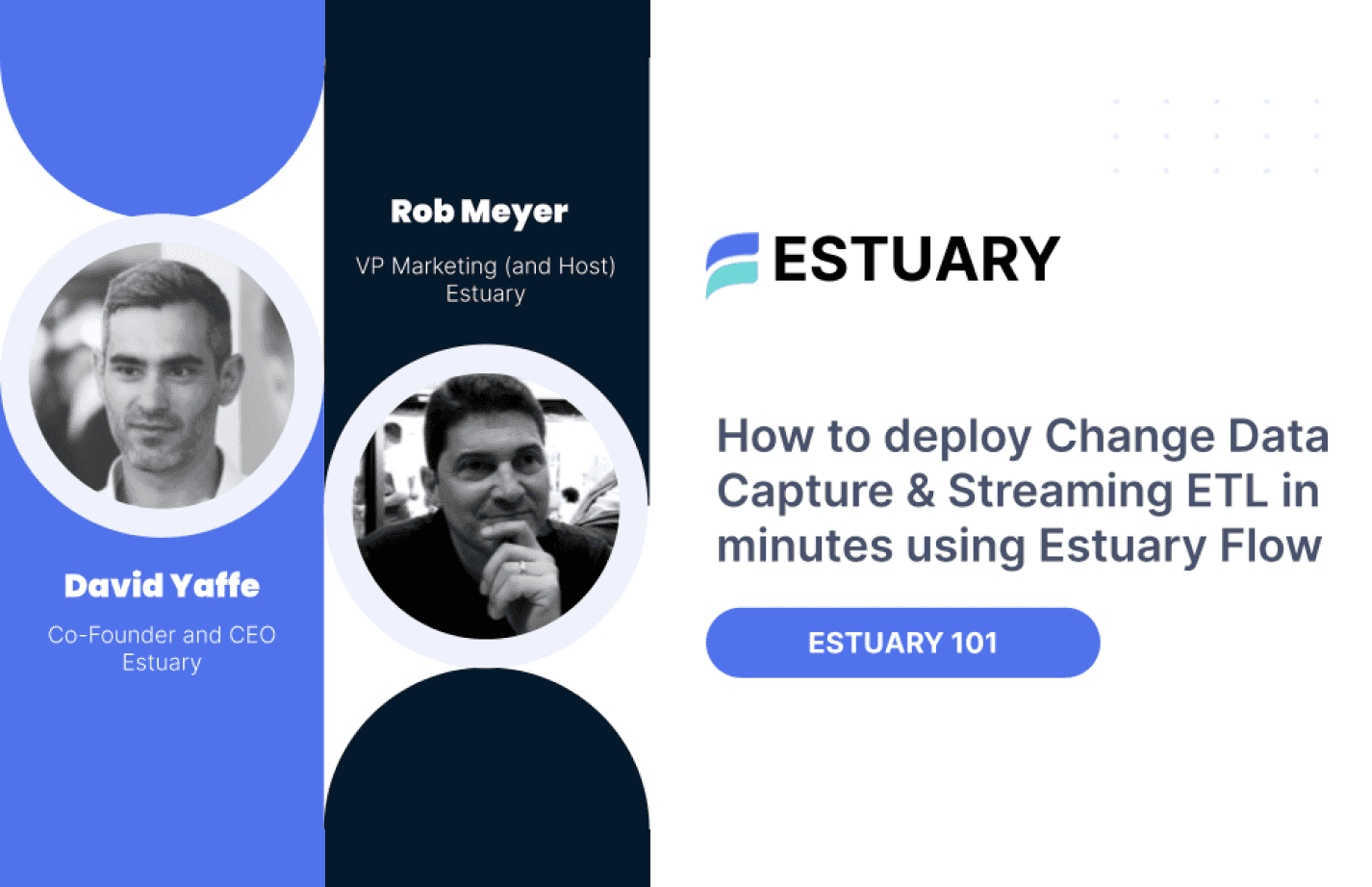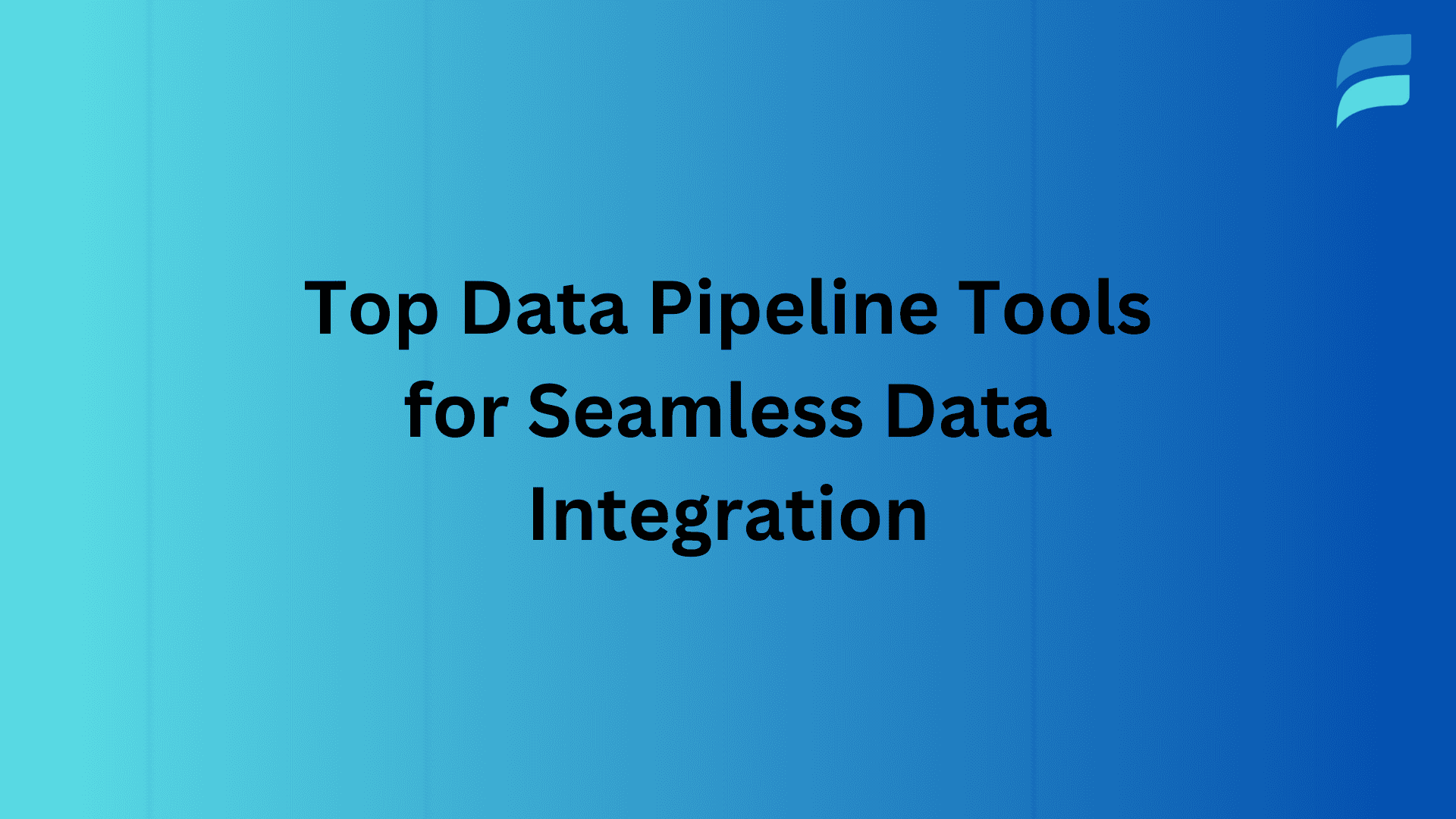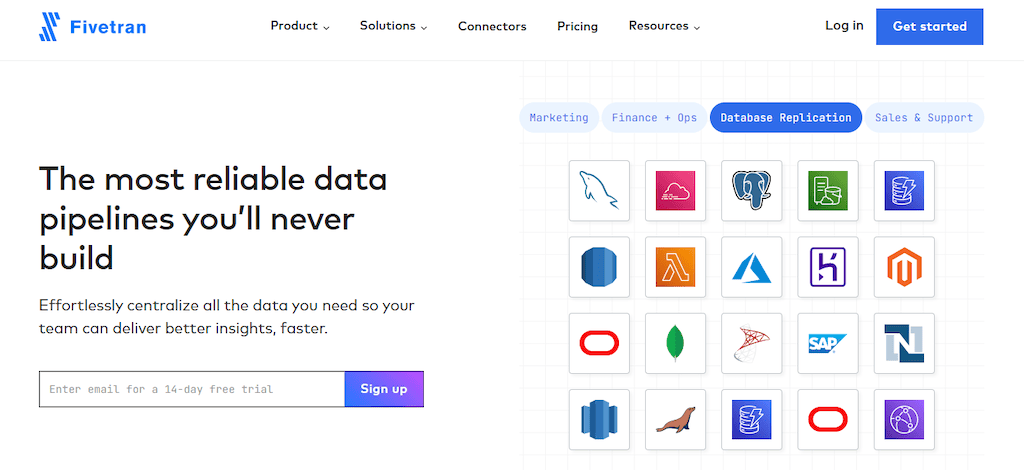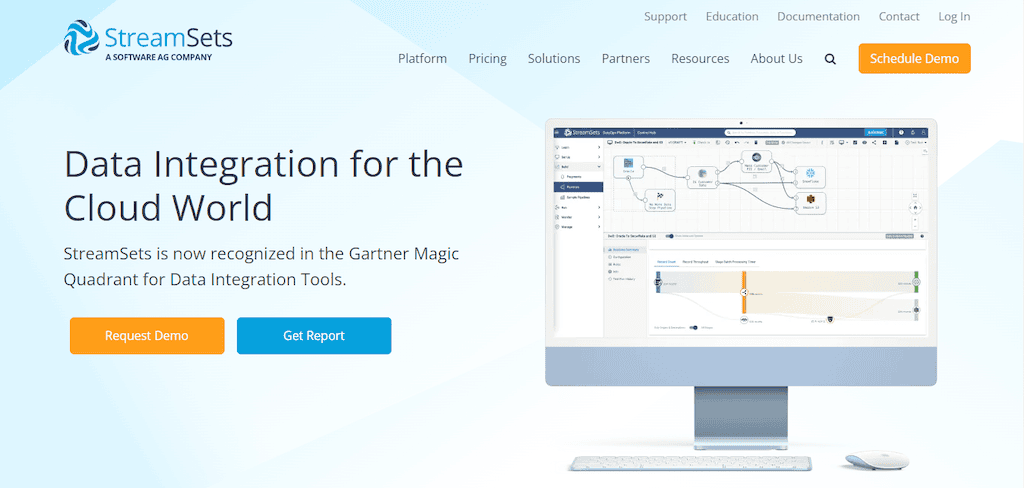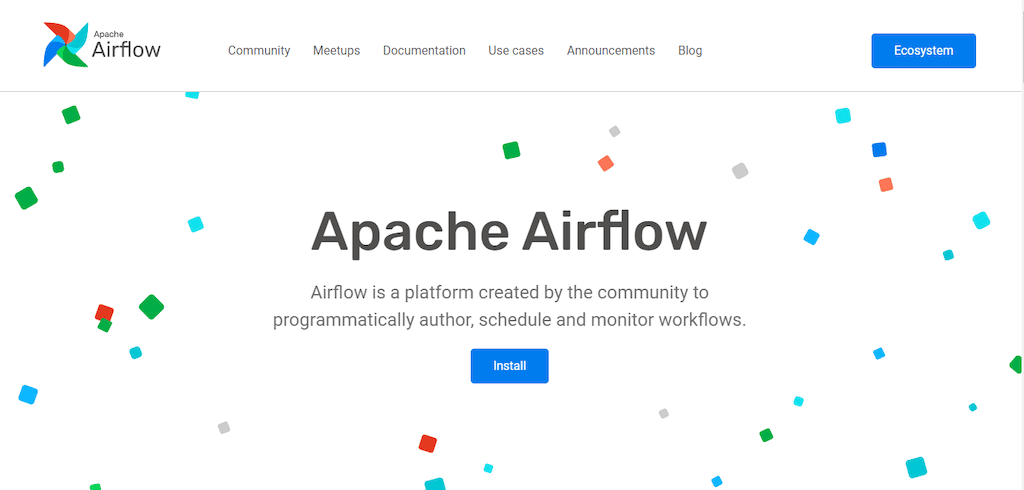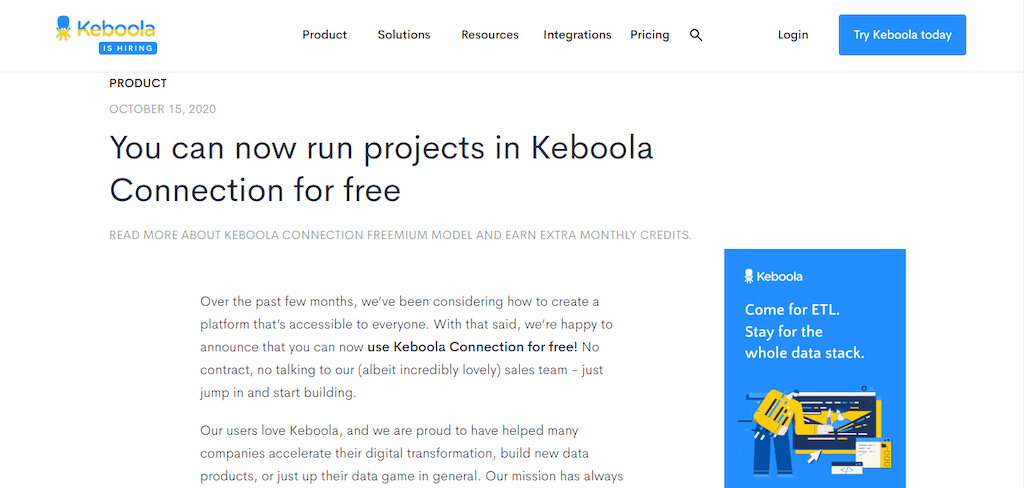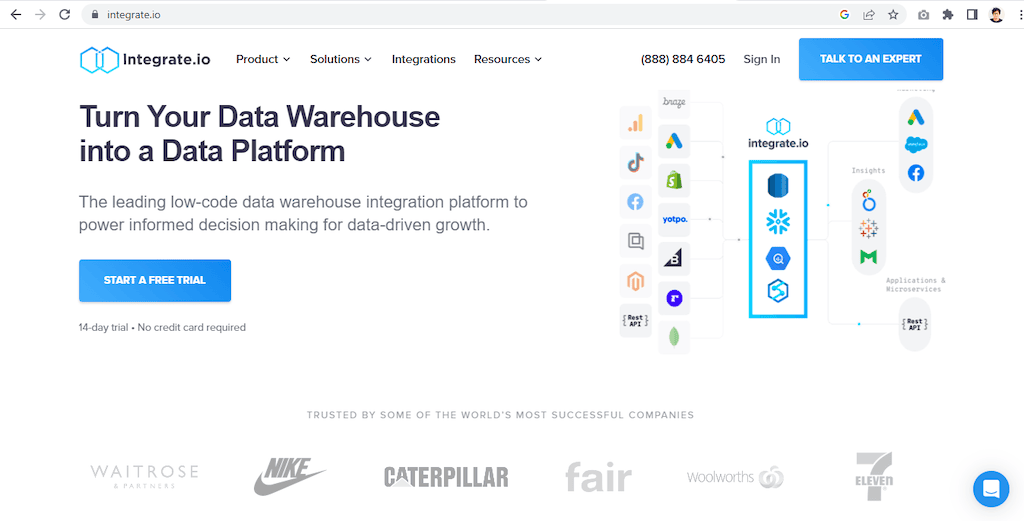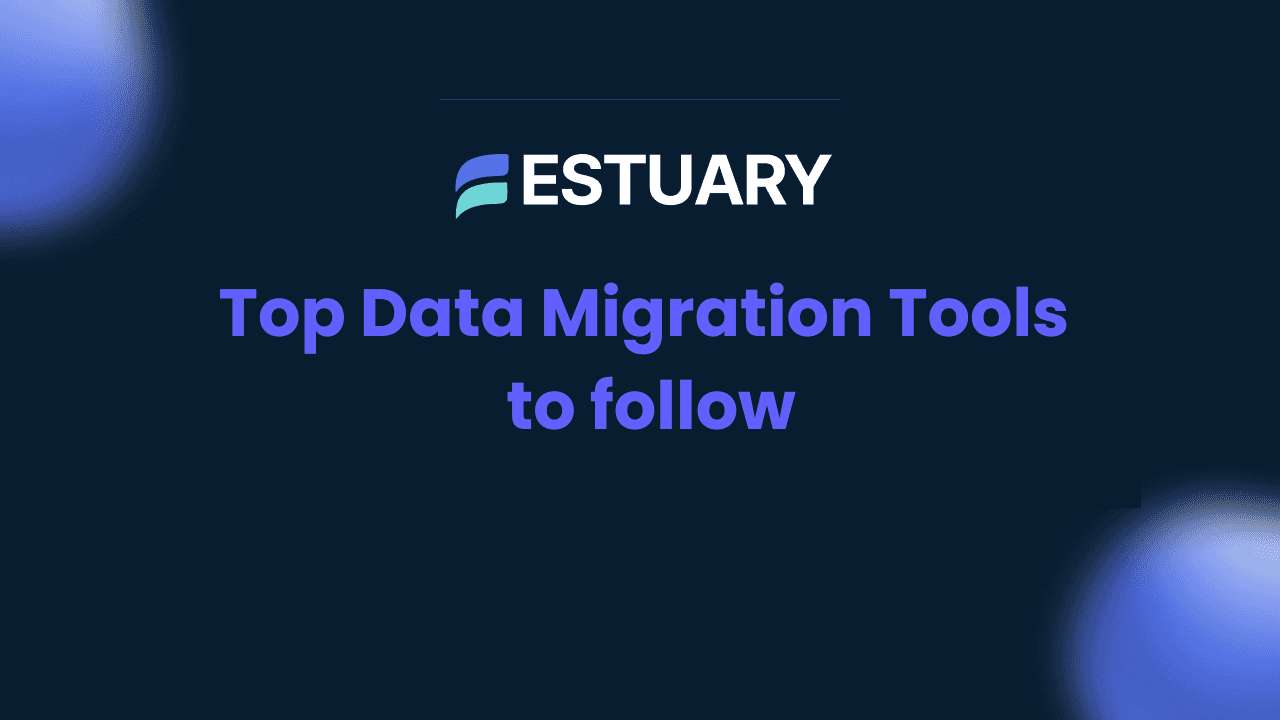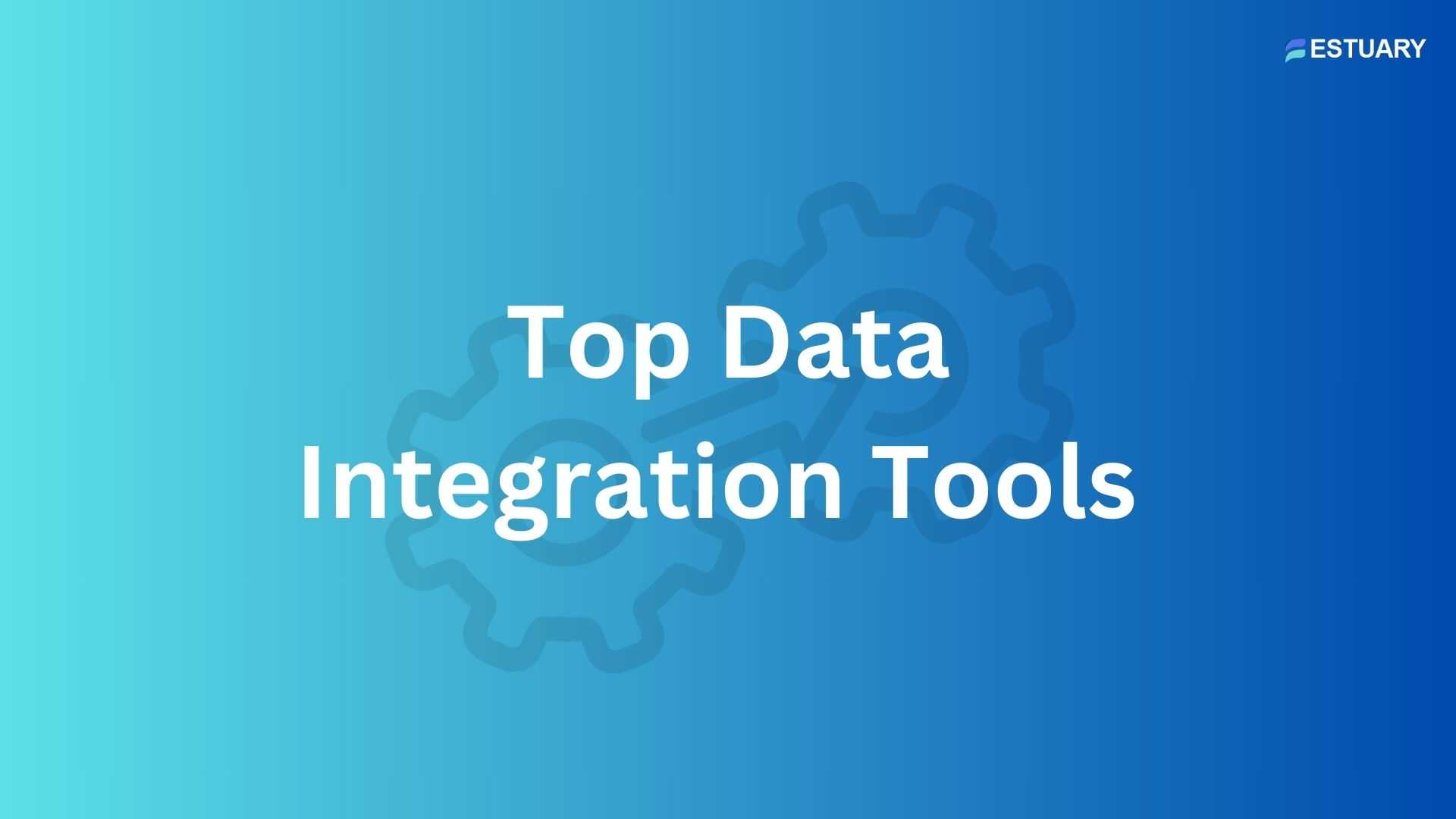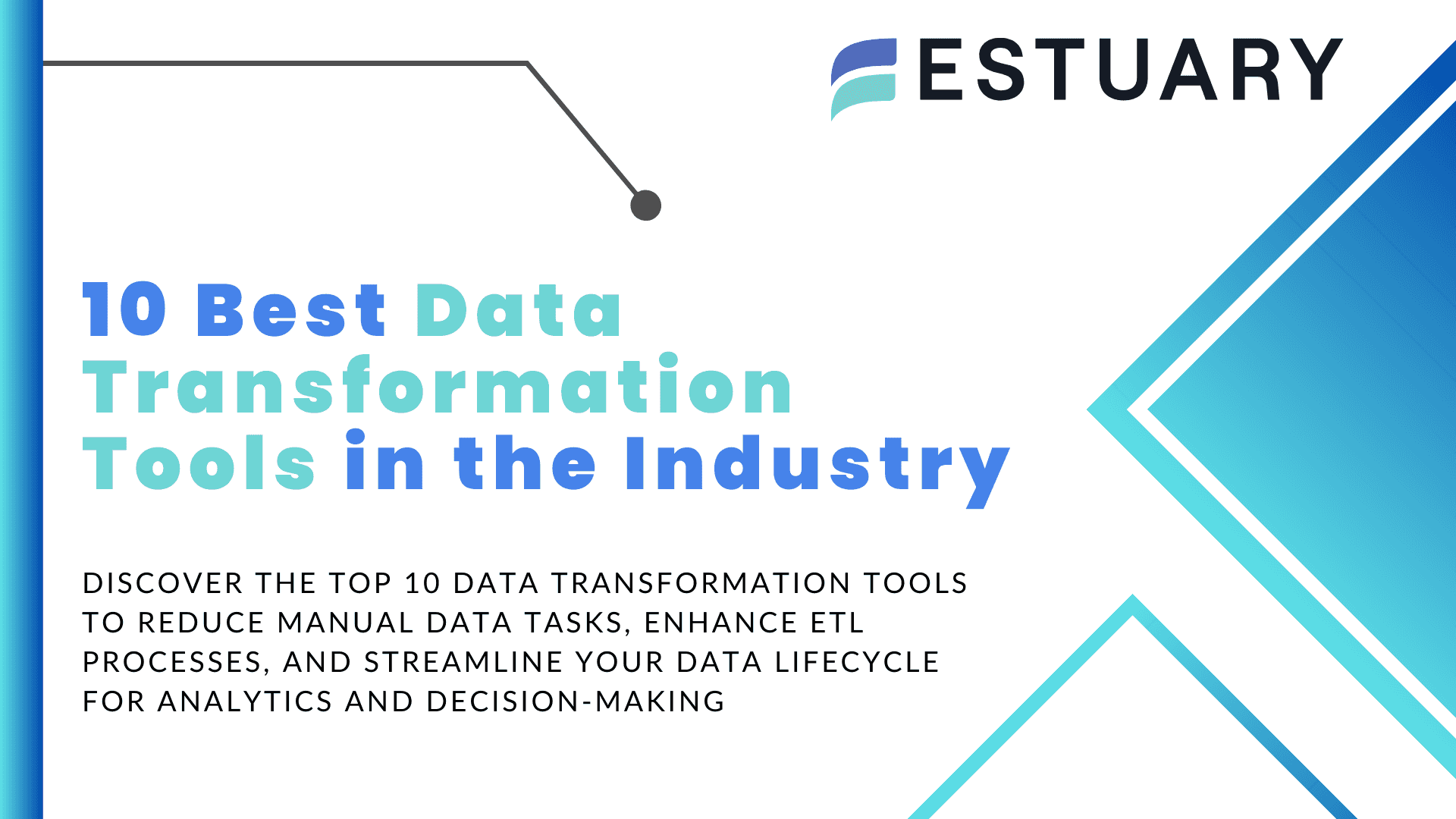
Data pipeline tools automate how data moves between systems, ensuring speed, accuracy, and reliability across your entire data stack. In 2025, the best data pipeline tools enable teams to integrate databases, APIs, SaaS applications, and warehouses in real time or on a schedule, keeping analytics, AI models, and operations always up to date.
Modern organizations need more than simple ETL. They require right-time data movement that adapts to any workload, from sub-second streaming to hourly batch transfers. The ideal platform combines flexibility, scalability, and predictable pricing without sacrificing security or governance.
In this guide, we review the 10 best data pipeline tools in 2025, including both open-source and enterprise solutions. You will learn how they compare on features, performance, and pricing, and how right-time platforms like Estuary unify streaming, batch, and CDC pipelines in a single dependable system.
Key Takeaways
- Data pipeline tools automate and streamline data movement across databases, APIs, and applications.
- The best data pipeline tools in 2025 support both real-time and batch workloads for flexible data integration.
- Choosing the right platform depends on scalability, connector coverage, pricing transparency, and deployment flexibility.
- Right-time data platforms like Estuary unify streaming, CDC, and ETL pipelines in one dependable system.
- Open-source frameworks such as Apache Airflow and Dagster offer customization, while managed platforms like Fivetran and Hevo prioritize simplicity.
Top 10 Data Pipeline Tools Comparison
Below is a quick comparison of the top 10 data pipeline tools for 2025. This table highlights their key features, core strengths, and pricing options so you can quickly identify which solution best fits your data integration needs.
| Data Pipeline Tool | Key Features | Pricing |
|---|---|---|
| Estuary | Real-time and right-time ELT/ETL, CDC, streaming SQL and TypeScript transformations, 200+ connectors, unified streaming and batch architecture. | Open-Source (Free), Cloud ($0.50/GB), Enterprise (Custom) |
| Hevo | Near real-time data replication using micro-batching (Kafka-powered backend), intuitive visual workflow builder, and 100+ prebuilt connectors. | Free, Starter ($239/mo), Business (Custom) |
| Fivetran | Fully managed ELT, incremental batch syncs, 200+ connectors, dbt support. | Custom Pricing |
| Dagster | Asset-centric orchestration, strong data lineage, Python-native, cloud or self-hosted. | Open Source (Free), Dagster+ Solo ($10/mo), Starter ($100/mo), Pro (Custom) |
| StreamSets | Smart data pipelines, automatic data drift handling, multi-cloud support. | Professional ($1000/month), Enterprise (Custom) |
| Stitch | Cloud-based, open-source, supports 100+ sources/destinations, real-time replication. | Standard ($100/mo), Advanced ($1250/mo), Premium ($2500/mo) |
| Apache Airflow | Python-based orchestration, task scheduling, DAG management for pipelines. | Free (Open-source) |
| Astera Centerprise | Zero-code platform, drag-and-drop mapping, handles complex data transformations. | Custom Pricing |
| Keboola | ETL/ELT, metadata management, 130+ extractors, built-in governance tools. | Free Tier, Enterprise (Custom pricing) |
| Integrate.io | Cloud-based, user-friendly, scalable, easy data transformation tools. | Free Trial, Custom Pricing for Standard/Professional/Enterprise Plans |
10 Best Data Pipeline Tools in 2025 (Reviewed & Compared)
Let’s examine each of the top 10 data pipeline tools for 2025 in greater detail.
1. Estuary
Estuary is a right-time data platform that unifies real-time streaming, CDC, and batch pipelines in a single dependable system. It enables teams to move data exactly when they need it, whether instantly, continuously, or on a schedule, without maintaining complex infrastructure.
Built on Gazette, Estuary’s high-performance streaming engine, the platform delivers exactly-once delivery, strong schema enforcement, and enterprise reliability. Teams can design pipelines through a no-code web interface or write transformations using SQL and TypeScript for maximum flexibility.
With more than 200+ prebuilt connectors, Estuary supports integrations across databases, SaaS platforms, and data warehouses such as Snowflake, Databricks, and BigQuery. It also supports reverse ETL, enabling continuous syncs back into operational systems like HubSpot or Salesforce.
Key Features
- Unified CDC, streaming, and ETL or ELT pipelines in one platform
- Predictable volume-based pricing with no hidden fees
- Flexible deployment options including SaaS, Private Cloud, or BYOC
- Enterprise-grade security with VPC Peering, PrivateLink, and encryption in transit and at rest
- No-code and code-first workflows using SQL or TypeScript
Pros And Cons Of Estuary Flow
| Pros | Cons |
| Combines CDC, streaming, and batch pipelines in one platform | Newer platform compared to long-standing batch ETL tools |
| Transparent, predictable pricing | |
| Secure and compliant for enterprise use | |
| 200+ connectors for diverse systems |
Pricing
Estuary offers three pricing plans:
- Open-Source (Free): It includes access to all of Estuary’s features and offers CDC from databases & 200+ connectors.
- Cloud ($0.50/GB): Cloud-hosted Flow with 99% uptime SLA. Comes with a 30-day free trial.
- Enterprise (Custom pricing):Designed for companies with security, compliance, and scale needs. Includes BYOC or Private Cloud deployment, VPC peering, PrivateLink, and 24/7 support with dedicated infrastructure.
2. Hevo
Hevo is a cloud-based data pipeline platform designed to make data integration simple for businesses of all sizes. It enables near real-time data replication using low-latency batch processing powered by a Kafka-based backend. With over 100 prebuilt connectors and a visual workflow builder, Hevo helps teams move data from various sources into cloud data warehouses like Snowflake, BigQuery, and Redshift without writing code.
While Hevo markets real-time capabilities, it primarily uses scheduled micro-batches for data ingestion. This means it’s ideal for use cases like dashboarding or periodic syncs, but not suitable for sub-minute operational or streaming analytics.
Hevo follows an ELT approach — data is extracted and loaded first, then transformed within the destination. The platform also includes built-in data masking, encryption, and SOC 2 compliance for teams handling sensitive information. With its clean UI, simple setup, and responsive support, Hevo is a good fit for teams new to data integration or those prioritizing ease of use over deep customization or true streaming needs.
Pros And Cons Of Hevo
| Pros | Cons |
| Quick and easy setup with just a few clicks. | High CPU usage for certain workloads |
| ELT workflows without coding. | Limited support for complex transformations or streaming joins |
| Smooth data integration experience. | |
| Offers outstanding customer support. |
Pricing
Hevo offers three pricing options for its data integration platform:
- Free: Limited to 1 million free events per month with free initial load, 50+ connectors, and unlimited models.
- Starter ($239/mo): Offers 150+ connectors, on-demand events, and 12 hours of support SLA.
- Business (Custom Pricing): HIPAA compliance with a dedicated data architect and dedicated account manager.
3. Fivetran
The third pick on our list is Fivetran, a fully managed data integration platform that automates extract, load, and minimal-transform (ELT) processes. It’s designed to reduce engineering overhead by managing schema changes, error handling, and connector maintenance on your behalf.
Fivetran supports over 200 connectors across cloud apps, databases, and warehouses, enabling businesses to sync their data into destinations like Snowflake, BigQuery, and Redshift with minimal setup. Its platform supports incremental batch updates and SQL modeling, making it easy for teams to centralize data for analytics.
While Fivetran isn't built for true real-time streaming, higher-tier plans offer sync intervals as fast as five minutes, making it suitable for many low-latency use cases. It's best suited for data teams looking for standardization and simplicity over deep customization. Most transformations are expected to occur post-load, using tools like dbt.
Fivetran is widely adopted by data engineers and analysts at mid-to-large enterprises, thanks to its scalability, reliability, and ease of use.
Pros And Cons Of Fivetran
| Pros | Cons |
| Fully managed with automated schema handling and error recovery. | Not built for real-time streaming; fastest sync is ~5 minutes. |
| Supports 200+ prebuilt connectors across apps and databases. | Limited customization or in-flight transformation. |
| Seamless integration with modern data stack tools like dbt. | Pricing can scale quickly with high row volumes. |
| Simple and user-friendly interface. |
Pricing
Fivetran offers a pay-as-you-go model based on Monthly Active Rows (MAR), with pricing applied separately to each connector. As of 2025, discounts are no longer aggregated at the account level, which can significantly increase costs for organizations using multiple connectors.
- Starter (Custom Pricing): Includes 1-hour syncs and access to 200+ fully managed connectors.
- Starter Select (Custom Pricing): Supports up to 0.5 million Monthly Active Rows per connector.
- Standard (Custom Pricing): Offers 15-minute syncs, unlimited users, and individual connector-level pricing.
- Enterprise (Custom Pricing): Includes 5-minute syncs, enterprise-grade connectors, and access to the High Volume Agent (HVA) for large-scale CDC workloads at an additional cost.
4. Dagster
Dagster is a modern, open-source data orchestration platform designed to manage the development, production, and observation of data assets. It offers a declarative programming model, enabling users to define data pipelines in terms of the assets they produce, which enhances clarity and maintainability.
One of Dagster's standout features is its asset-centric approach. This design allows for intuitive data lineage tracking and observability, making it easier to understand how data flows through your systems. With built-in support for testing, partitioning, and dynamic execution, Dagster provides a robust framework for building reliable data pipelines.
Dagster also integrates seamlessly with popular data tools and supports execution in various environments, including local, cloud, and hybrid setups. Its modular design and rich feature set make it a versatile choice for organizations looking to streamline their data workflows.
Pros and Cons of Dagster
Pros | Cons |
| Asset-centric orchestration: Focuses on data assets rather than just tasks, enabling better lineage tracking and observability. | Steep learning curve: The asset-based paradigm may require a mindset shift for teams accustomed to task-based orchestration. |
| Built-in testing and partitioning: Facilitates reliable and scalable data processing with support for testing and data partitioning. | Evolving ecosystem: While growing rapidly, Dagster's community and plugin ecosystem are still maturing compared to more established tools. |
| Flexible execution environments: Supports local, cloud, and hybrid deployments, integrating seamlessly with popular data tools. | Limited plugins: The plugin ecosystem is not as extensive as some other orchestration tools, potentially requiring custom integrations. |
| Modern design with strong typing: Enforces data integrity and reduces errors through a modular approach with reusable components. | |
| Improved monitoring and logging: Provides robust tools for monitoring and logging pipeline runs, enhancing visibility and troubleshooting. |
Pricing
Dagster offers a tiered pricing model:
- Open Source: Free to use with community support.
- Dagster+ Solo and Starter: Priced at $10/month for Solo, and $100/month for small teams, including access to Dagster Cloud features.
- Dagster+ Pro: Custom pricing for larger organizations requiring advanced features and support.
5. StreamSets
StreamSets is a data integration platform designed to handle real-time and batch pipelines across hybrid and multi-cloud environments. It helps organizations build “smart data pipelines” that adapt to changing data formats, sources, and destinations.
In July 2024, StreamSets was acquired by IBM from Software AG, as part of IBM’s strategy to enhance its data ingestion, AI, and hybrid-cloud integration capabilities.
Key Features
- Real-time ingestion and data streaming alongside batch data processing.
- Visual pipeline builder combined with support for complex transformations and data drift detection.
- Hybrid and multi-cloud deployment support, including on-premises integration.
- Advanced schema detection, offset handling, and pipeline observability.
Pros And Cons Of StreamSets
| Pros | Cons |
| Strong focus on hybrid cloud and real-time integration use cases. | Recent change in ownership may result in transition or integration phases. |
| Well-suited for organizations with large, complex data ecosystems across on-premises and cloud. | Pricing and offering structure may evolve as the platform is consolidated into IBM’s stack. |
6. Stitch
Stitch is a powerful and flexible data pipeline platform that is designed to help businesses easily connect, transfer, and integrate data from a wide range of sources in the form of useful raw data. The platform is cloud-based and open-sourced and allows data replication into cloud data warehouses, making it easy to use and customize.
With its support for a large number of sources and destinations, as well as its open-source toolkit for building custom sources, Stitch is a highly transparent and flexible platform for managing data pipelines. Whether you are looking to build simple or complex data pipelines, Stitch has the capabilities you need to get the job done.
The platform includes features such as data masking and encryption, as well as support for compliance with GDPR and other privacy regulations. This makes Stitch a reliable and secure solution for businesses that need to protect their sensitive data.
Pros And Cons Of Stitch
| Pros | Cons |
| Easy to integrate with a variety of other sources. | Limited customer support. |
| The platform is affordably priced and includes advanced features. | Pricing model doesn’t scale well. |
| Stitch makes it easy to replicate relational databases. | |
| Provides real-time evaluation of user experience through data pipelines. |
Pricing
Stitch has three pricing plans:
- Standard (Starts at $100/mo): Basic features that are best suited for beginners.
- Advanced ($1250/mo): Advanced features for more control and extensibility of data pipelines.
- Premium ($2500/mo): For high data volumes. Ideal for companies that need top security and compliance.
All three plans come with a free 14-day trial for you to evaluate the platform and determine if it meets your needs.
7. Apache Airflow
Apache Airflow is a highly versatile and strong data integration platform designed to help businesses automate and manage the execution of their data pipelines. The platform is open-source and uses Python for SQL to programmatically author, schedule, and monitor data pipelines.
Airflow was originally developed at Airbnb in 2014 and was later accepted into the Apache Software Foundation’s Incubator Program in 2016. In 2019, it was announced as a top-level Apache project. With over 140 integration and strong community support, Apache Airflow is widely used as a data orchestration solution by businesses around the world.
While it doesn’t offer pre-built data pipeline components like many of the other options on this list, Airflow is a great choice if you need to orchestrate pipelines you code yourself.
Apache Airflow’s intuitive interface makes it easy to monitor and manage data pipelines. To help you visualize the scheduling and execution of your pipelines, the platform includes a variety of tools and features, including:
- Graphs
- Tree views
- Code views
- Gantt charts
With its rich, actionable context menu, you can easily access detailed information about individual task instances and take action as needed.
Pros And Cons Of Apache Airflow
| Pros | Cons |
| Simplifies the maintenance of automation. | Only supports Python. |
| Can notify users of any issues that arise. | Requires you to hand-code your data pipelines. |
| If scripts fail, Apache Airflow can automatically attempt a retry. |
Pricing
Apache Airflow is a free and open-source data integration platform that is licensed under the Apache License 2.0. This means that you can use, modify, and distribute the platform without incurring any additional costs.
8. Astera Centerprise
Astera Centerprise is a comprehensive data integration platform that provides a complete suite of data management solutions. The platform includes tools for data integration, transformation, quality, and profiling to make it easy for users to handle a wide range of integration scenarios.
With over 25 years of experience in the industry, Astera Centerprise has a proven track record of providing robust, affordable, and high-performance solutions to 1000 companies and enterprises. Its advanced capabilities allow businesses to overcome even the most complex data management challenges and achieve their goals.
Pros And Cons Of Astera Centerprise
| Pros | Cons |
| It is a zero-code platform that allows users to easily build data integrations without writing code | Some users have reported bugs while using the platform |
| It features a drag-and-drop mapping interface that makes it easy to set up data integrations. | |
| Users can preview data before processing to ensure that it is correct. |
Pricing
Astera Centerprise offers trial options for you to test out the platform and see if it meets your needs. This trial period allows you to get a feel for the platform and its capabilities before committing to a purchase. In addition to its trial option, Astera Centerprise also offers customized quotes based on the specific needs and requirements of each business.
9. Keboola
Keboola is a modern data platform founded in 2018 that simplifies and speeds up data engineering to help companies get more value from their data operation. Keboola connection is a comprehensive data integration platform that is designed to serve the needs of enterprises and small to medium-sized businesses. The platform offers a range of end-to-end solutions that are specifically tailored for web applications.
Among its key features is support for ETL processes, as well as tools for managing metadata and integrating data from multiple sources. Keboola Connection also includes support for web services to make it easy for businesses to connect and integrate data from a wide range of sources and destinations.
Pros And Cons Of Keboola
| Pros | Cons |
| Offers a one-stop shop for data extraction, modeling, and storage. | Specific data types in storage can be confusing for new users. |
| Utilizes advanced security techniques to protect your data. | Slightly expensive for some users. |
| The platform has more than 130 extractor components that can automate data collection. |
Pricing
Keboola offers two plans:
- Free Tier: Unlimited ETL/ELT workflows with 200+ data connectors.
- Enterprise Plan (Custom Pricing): For more comprehensive data management solutions and price depends on the usage.
10. Integrate.io
Integrate.io is a cloud-based platform that helps businesses seamlessly integrate, process, and prepare data for analytics. All companies can utilize the platform because it is made to be user-friendly and does not require coding expertise or technical knowledge.
With Integrate.io, businesses can easily connect to various data stores and utilize built-in data transformation tools without the need for additional hardware or software investment. The platform is scalable, allowing businesses to grow and adapt their data operations as needed.
Pros And Cons Of Integrate.io
| Pros | Cons |
| Coding and jargon-free environment, making it easy to use for non-technical users. | Limited integration options compared to others. |
| Scalable platform that can handle large amounts of data. | Some users reported issues with stability. |
| Offers immediate connectivity to various data stores. |
Pricing
Integrate.io offers a free trial, after which pricing is based on usage. You can choose from the Standard Plan, the Professional Plan, and the Enterprise Plan. Custom pricing can be requested.
How to Choose the Best Data Pipeline Tool for Your Business
Selecting the right data pipeline tool depends on your team’s skills, performance needs, and long-term data strategy. With so many platforms available, the key is to focus on scalability, flexibility, and pricing transparency.
1. Define Your Data Needs
Start by identifying how your data moves through your systems. Do you need real-time streaming for operational analytics, or is batch processing sufficient for periodic reports? Knowing your latency and volume requirements helps narrow your options.
2. Evaluate Connector Coverage
The best tools support a wide range of connectors across databases, SaaS apps, and data warehouses. Platforms like Estuary and Fivetran offer 200 or more prebuilt integrations, while open-source tools such as Apache Airflow rely on community-developed connectors.
3. Consider Scalability and Reliability
Choose a tool that can handle data growth without performance issues. Scalable systems ensure that as your data volume increases, your pipelines remain fast, stable, and easy to maintain.
4. Check Pricing Transparency
Predictable pricing is essential for long-term planning. Many tools use volume-based or event-based pricing, while Estuary provides clear, usage-based pricing with no hidden fees. Avoid platforms that charge separately for each connector or sync frequency unless it aligns with your budget.
5. Look for Security and Compliance Features
Ensure the tool supports encryption in transit and at rest, role-based access control, and compliance with standards like SOC 2 and HIPAA. Enterprise-ready platforms such as Estuary and StreamSets also offer private deployment and VPC connectivity for secure environments.
6. Match the Tool to Your Team’s Skills
If your team prefers visual workflows, consider low-code platforms such as Hevo or Astera Centerprise. For engineering-heavy teams, open-source orchestrators like Dagster or Airflow provide deep customization and flexibility.
7. Prioritize Right-Time Capabilities
The future of data movement is right-time, not just real-time or batch. Tools like Estuary allow you to control when and how data flows, aligning pipeline execution with your business’s exact timing needs.
Conclusion: Which Data Pipeline Tool is Right for You?
Choosing the right data pipeline tool depends on your data strategy, performance goals, and budget. In 2025, the best solutions go beyond traditional ETL to support real-time, batch, and right-time data movement across modern cloud ecosystems.
If your organization values flexibility, reliability, and predictable costs, look for a platform that combines both automation and control. Tools like Fivetran, Hevo, and Dagster serve specific needs, but only Estuary brings together streaming, CDC, and batch pipelines into a single dependable system.
With Estuary, you can move data exactly when it matters, whether instantly or on a schedule. Its right-time architecture, transparent pricing, and 200+ connector library make it ideal for teams that want power without complexity.
Start building dependable, right-time data pipelines today. Try Estuary for free and see how it simplifies real-time integration at scale.
Related Articles
If you found this guide helpful, you may also enjoy these related resources:
FAQs
What is the difference between ETL and data pipelines?
Which is the best real-time data pipeline tool in 2025?
What are the best open-source data pipeline tools?
How do I choose the right data pipeline tool for my business?

About the author
With over 15 years in data engineering, a seasoned expert in driving growth for early-stage data companies, focusing on strategies that attract customers and users. Extensive writing provides insights to help companies scale efficiently and effectively in an evolving data landscape.


